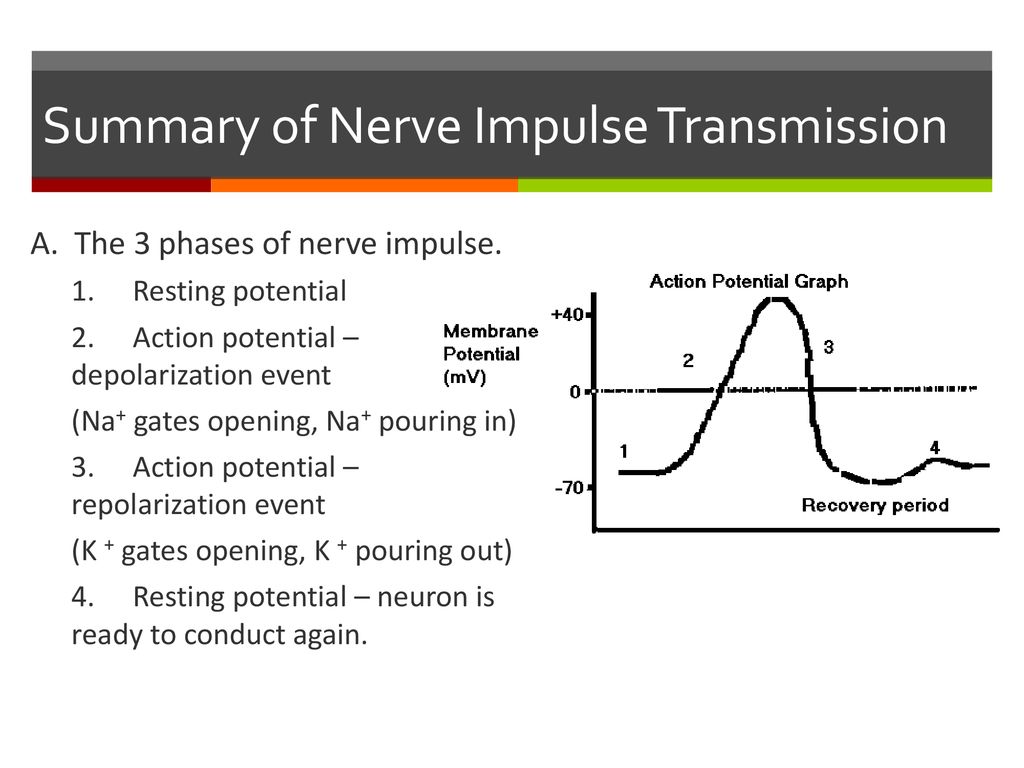Synapse: the junction between the axon terminal of one neuron and dendrites, cell body or axon of another neuron is called synapse. The neuromuscular junction is also known as synapse.
Synapse is a small gap that occurs between the last portion of the axon of one neuron and the dendrite of next neuron. When an impulse reaches at the end plate of the axon, vesicles consisting of a chemical substance or neurotransmitter, such as acetylcholine, fuse with the plasma membrane. The nerve cells are lined up head to tail all the way down a nerve track, and are not connected, but have tiny gaps between them and the next cell. These tiny gaps are called synapses. When you get a nerve firing, you have probably heard that it is an electrical impulse that carries the signal. Nerve cells called neurons in your brain and spinal cord function to transmit and receive signals to and from other neurons in your body. These specialized cells transmit electrical impulses that control all your movements and basic functions, including those that you are unaware of.
Synaptic knob: the swelling terminal of axon or dendrites is known as synaptic knob.
Pre-synaptic neuron: the neuron carrying impulse toward synapse
Post synaptic neuron: the neuron which receive the impulse and carry the impulse away from the synapse.

Two theories have been put forward to explain the conduction of nerve impulse across the synapse. They are;
Nerve Impulse Transmission Diagram
- Electrical transmission theory
- Chemical transmission theory
Electrical transmission theory:
Impulse transmission through synapse is accomplished by electric current. When the impulse reaches the pre synaptic knob, the impulse itself act as stimulus for the post synaptic neuron causing depolarization. Now the action potential generate in second neuron.
Chemical transmission theory:

Nerve impulse are conducted across the synapse with the help of chemical substances called neurotransmitter. The process of chemical transmission was discovered by Henry (1936).
Mechanism
Figure: Nerve impulse transmission through Synapse
Nerve Impulse Explained
- When nerve impulse reaches the pre-synaptic knob, it depolarized the presynaptic membrane and causes the opening of voltage gated calcium channel.
- Diffusion of Ca++ ion in the presynaptic knob causes movement of synaptic vesicle to the surface of the knob. Synaptic vesicle carries the neurotransmitter.
- Synaptic vesicles then fused with the presynaptic membrane and get rupture to discharge its content ie. Neurotransmitter (Acetlcholine) into synaptic cleft.
- Synaptic vesicles then return to the cytoplasm of pre-synaptic knob for refilling.
- Some of the released neurotransmitter binds with the protein receptor present on the post synaptic membrane of another neuron and change the membrane potential.
- Other unbound neurotransmitter immediately get lost from the synaptic cleft.
- The depolarization of the post synaptic membrane opens the Sodium channel causing influx of Na+ ion. Thus causing depolarization and generate action potential. In this way, the impulse get transmitted to next neuron along the synapse.
Why can nerve impulses travel only in one direction?
1 Answer
Because of the chemical nature of impulse and the axon-dendrite structure.
Explanation:
Because of the chemical nature of impulse and the axon-dendrite structure.
http://www.biologymad.com/nervoussystem/nerveimpulses.htm (Best technical explanation and excellent graphics and animations)
The best generic answer from a 2008 post follows (with my own edits for clarity):
A Nerve electrical impulse only travels in one direction. There are several reasons nerve impulses only travel in one direction. The most important is synaptic transport.
In order for a 'nerve impulse' to pass from cell to cell, it must cross synaptic junctions. The nerve cells are lined up head to tail all the way down a nerve track, and are not connected, but have tiny gaps between them and the next cell. These tiny gaps are called synapses.
When you get a nerve firing, you have probably heard that it is an electrical impulse that carries the signal. This is true, but it is not electrical in the same way your wall outlet works. This is electrochemical energy. Neurotransmitters are molecules that fit like a lock and key into a specific receptor. The receptor is located on the next cell in the line. When the neurotransmitter hits the receptor on the next cell in line, it signals that cell to begin a firing as well.
This will continue all the way down the length of the nerve track. In a nutshell, a nerve firing results in a chain reaction down the nerve cell's axon, or stemlike section. Sodium (Na+) ions flow in, potassium (K+) ions flow out, and we get an electrochemical gradient flowing down the length of the cell. You can think of it as a line of gunpowder that someone lit, with the flame traveling down the length of it. Common electrical power is more like a hose full of water, and when you put pressure on one end, the water shoots out the other.

Therefore, nerve impulses cannot travel in the opposite direction, because nerve cells only have neurotransmitter storage vesicles going one way, and receptors in one place.
Addendum to further questions:
The impulses travel TO the CNS from the PNS. Do not confuse NERVE signals from the MUSCLE signals! Each goes ONE WAY, but together they coordinate to help use move. The following is a better description of the chemical processes involved:
https://web.facebook.com/bryant.seabrooks/videos/10208641612752284/?t=325
Related questions
